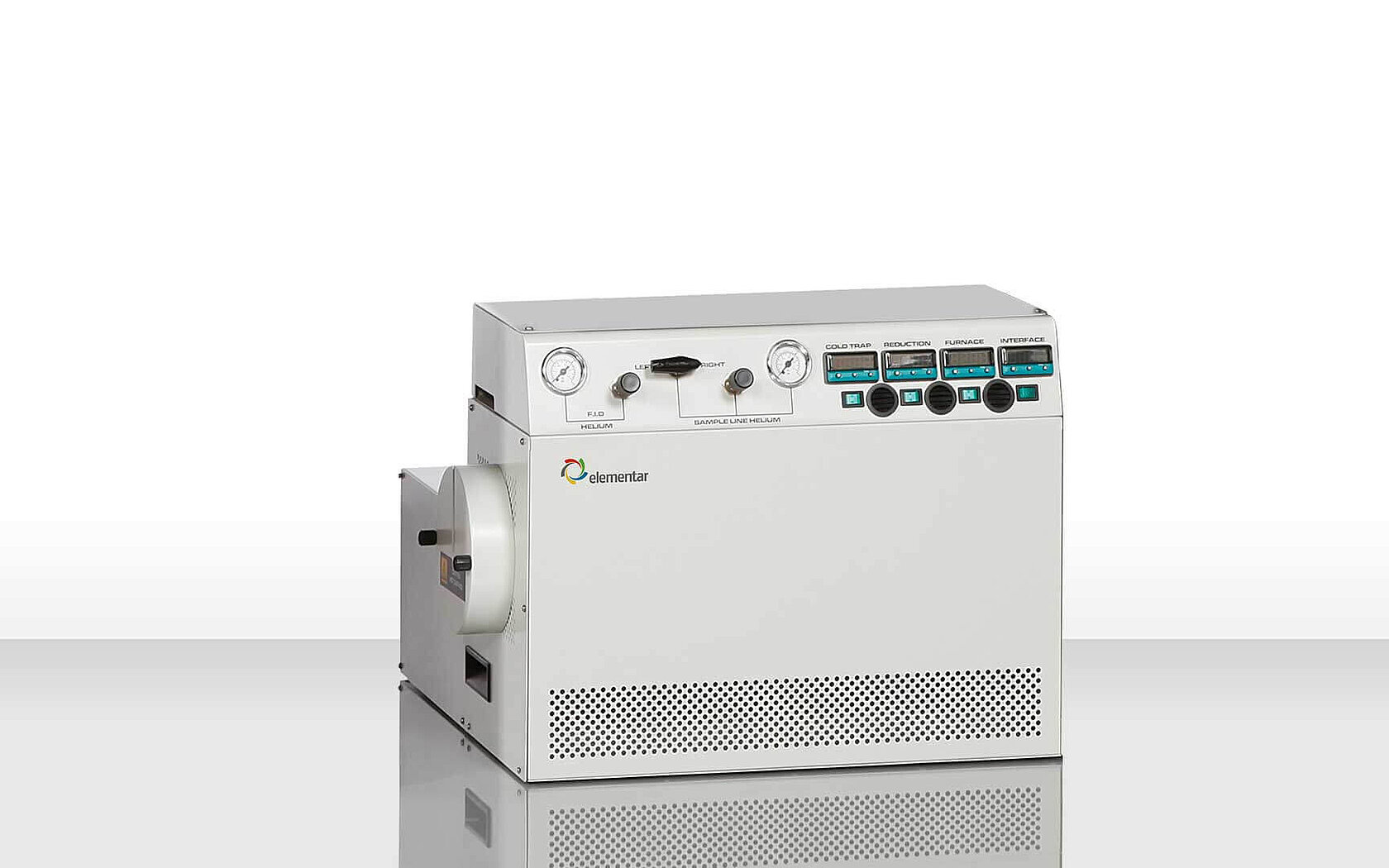The δ2H hydrogen isotopic composition of lipid “biomarker” compounds (molecules synthesized by and traceable to living organisms) preserved in geological archives have long been of interest to scientists studying the climate and environment of the past. The preferred method of stable isotope analysis of such lipids employs gas chromatography-isotope ratio mass spectrometry (GC-IRMS), which effectively limits applications to those which measure compounds of relatively low molecular weight and polarity (i.e. compounds which elute from a typical capillary GC column at c. 320-350 °C). As such, only very few compounds of molecular weight > c. 500 g/mol have been successfully analyzed intact by GC-IRMS to determine δ2H. However, the hydrogen isotopic composition of larger and/or polar compounds can be of significant interest. Of particular interest are triacylglcerides (TAGs), whose derivative fatty acids are often employed in studies of archaeological diet and modern food authenticity analysis, and tetraether lipids including glycerol dialkyl glycerol tetrethers (GDGTs) which have been widely employed as proxies for paleoclimate and environmental analysis based on their relative distributions, as well as longer chain n-alkanes, the lower molecular weight homologues of which have been widely employed for paleohydrological analysis. Typically, accessing the isotopic information held in these molecules requires chemical degradation and the analysis of fragments, which as well as being laborious, introduces large scopes for error and uncertainty, including potential for isotope exchange, fractionation, or a loss of specificity with respect to identifying the parent molecule.
Dr Sabine Lengger, working at the University of Bristol and University of Plymouth, has however pioneered new methodologies to directly measure these compounds of interest using an Elementar GC5 inlet system, employing high-temperature gas chromatography (HTGC) to enable the elution of the larger and more polar compounds. In collaboration with Elementar UK Ltd (Dr Kyle W. R. Taylor and Dr Robert Berstan) and researchers at University of Colorado, Harvard University, and Dartmouth College, Dr Lengger validated her new HTGC-IRMS δ2H methodologies and modifications by comparing the results against standard compounds of know isotopic composition analyzed as isolated compounds with established bulk pyrolysis instrumentation. The analysis resulted in excellent agreement between the two methods, indicating that the HTGC-IRMS methodologies are fit for purpose and ultimately can allow analysis of these larger, more polar molecules without the need to laboriously isolate and individually measure them, or chemically degrade them and potentially lose vital information. This paves the way for hitherto unexplored avenues of exciting isotope analysis of biomarkers which were previously unavailable to scientists interested in these compounds for the purposes of e.g. food forensics, archaeology, petroleum geosciences, microbial ecology, paleoclimate and paleohydrology.
Please find the paper here: https://doi.org/10.1002/rcm.8983
